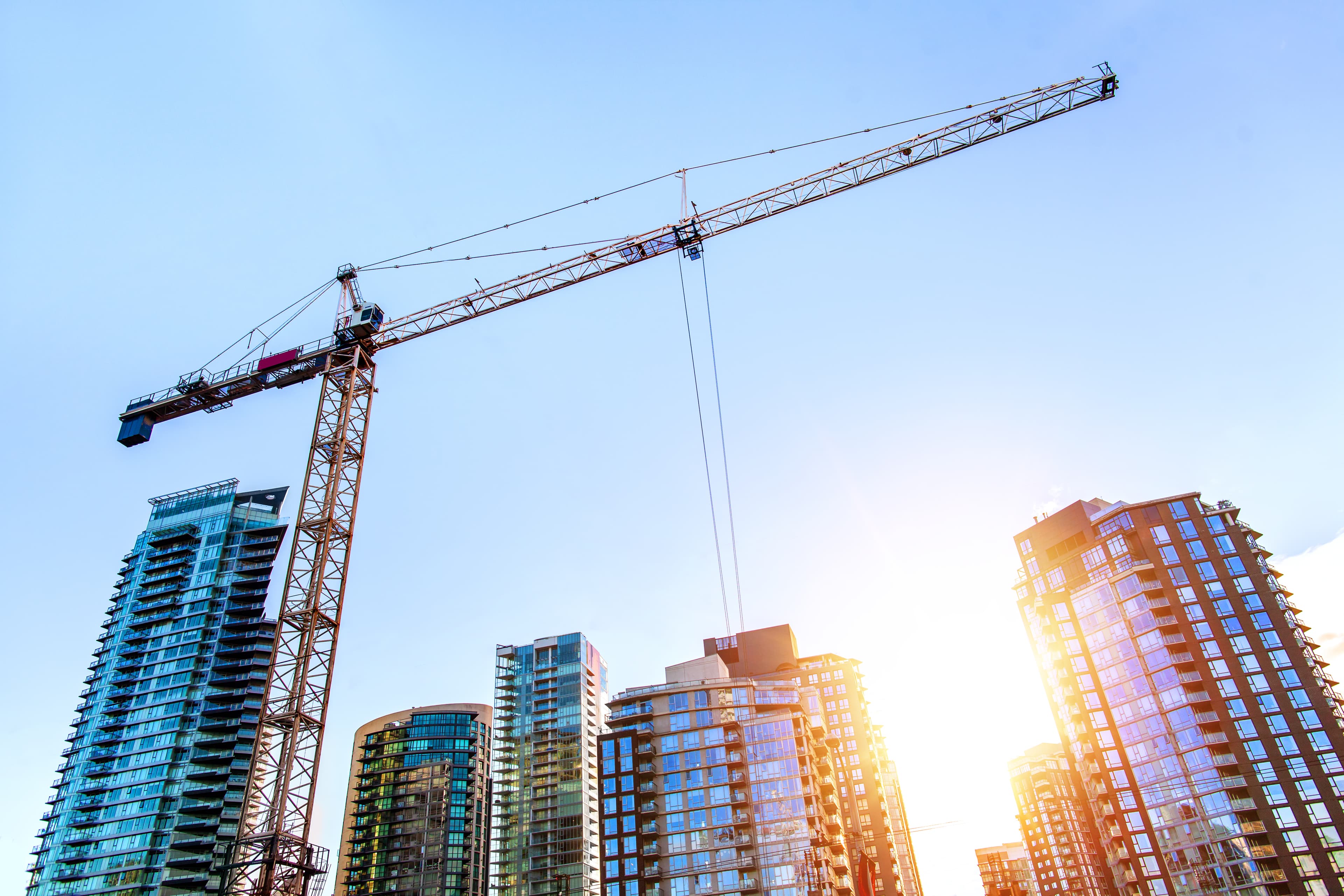Key highlights
As the housing unaffordability crisis continues to snowball across Ontario, the pressure is on to build 1.5 million homes over the next 10 years – but is this feasible?
Altus experts Ray Wong and Marlon Bray join Richard Lyall, President of RESCON, to discuss the opportunities and challenges that are expected to impact the trajectory of housing supply in Ontario
With 45 plus different government bodies, departments and agencies involved in the decision-making process on a new project, there are simply too many cooks in the kitchen of the Canadian housing market
Housing is taxed as if it was bad for us, much like a consumption tax on Alcohol or Tobacco. Disproportionate year-over-year increases in housing fees and taxes issued by the government have only further inflated prices handed down to owners and renters.
For things to truly change, it needs to be understood that the development industry and builders are not the enemy; rather, they the partners for the solution
Can we build 1.5 million homes in Ontario in the next 10 years? As Ontarians continue to grapple with an encroaching housing affordability crisis across the province, the complexity of this issue and its many moving parts weighs heavy on experts and citizens alike. Richard Lyall, president of RESCON, Ontario's leading association of residential builders, joined Marlon Bray and Ray Wong, on the Altus Insights Podcast Series to discuss the government of Ontario’s plan to solve the supply side of Ontario’s housing crisis.
Lyall was recently appointed to the Housing Supply Action Plan Implementation Team, which is a body intended to advise the government as they move to tackle the housing crisis that is not just impacting Ontario, but Canada at large. This issue didn’t materialize overnight, but over the last few years, specifically, all three levels of government have acknowledged that there is, in fact, a crisis, and the provincial government has seemingly taken the lead in trying to solve the issue.
We’ve got 1.5 million homes as a target, and it’s an ambitious target, but is it even enough? This is the question posed by Bray to kick-off the lively discussion between industry experts. According to reports from CMHC, 1.5 million homes will help, but the magic number might actually be much bigger. “By 2030, if construction continues at current levels, CMHC says Ontario will be 1.85 million homes short of the number needed to get prices down to 2003-04 levels, when the average house cost $500,000,” details a recent report from CBC News.
“I think it’s important to note that there is a housing crisis in many parts of the developed world,” clarifies Lyle. “But we happen to be in a particularly bad situation, and how we got here was sort of an insidious process, and now we’re trying to fix it.” According to Lyall, the target of 1.5 million homes is based on demographics and peer reviewed research; however, the real number is actually 1.78 million (which is very close to the CMHC number), over the next 10 years. “To get there, we pretty much have to double the amount of housing we are producing right now.”
On the research side, there has been a great deal of discussion on how we reach this target based on the average new construction that we’ve seen in Ontario and Canada over the last few years. For example, CMHC data reveals that Toronto saw 45,109 housing starts (for all dwelling types) in 2022. With this in mind, is 1.5 million a realistic target? “Whether or not you like the policies of the provincial government, I think the key is that we’re having this discussion,” notes Wong. “It will be interesting to see, over the next 10 years, how the numbers line up based on the market, or if it will be subsidized or pushed in a certain direction. But something has to be radically changed to really impact the data and the current situation we face with developers.”
Wong’s observations beg the question – what is the biggest inhibitor? “I always look at fees and government charges,” begins Bray. “I really do come down on both the municipalities and the federal government, and I often ask myself, why does the government make housing so expensive – certainly more expensive than it needs to be?”
From bad planning to high taxes: The systemic shortcomings plaguing the Ontario housing sector
Lyall describes the biggest barrier to affordable housing as being systemic. “We started off with really bad planning. We’ve got a growth plan, but it ignores demographics to a large extent,” he explains. “The other problem pertains to the rules. We’ve calculated that we’ve got 45 different government bodies and agencies that are involved in the decision-making process on a new project.” Conversely, Singapore – which is considered the most advanced jurisdiction of the world on building approval – has 12 government bodies and agencies involved in the decision-making process of a new project. “As things get more complex, it takes that much longer to get anything done,” Lyall notes. “And then taxes – we tax housing like we tax alcohol or tobacco.” If you ask Lyall, the sector is severely over-taxed and over-regulated, and its creating critical bottlenecks.
The topic of housing taxation is an interesting point to consider; after all, housing is a basic human need, much like food. Should it really be taxed in a similar fashion to non-essential categories? “It’s crazy, but that’s what we’re doing and have always done, and it’s gotten worse to the point where taxes, fees and levies on a new house or a condo is about 31% of the cost,” Lyall clarifies.
As an example, Lyall proposes the scenario of a millennial who (by some miracle) can afford a million-dollar piece of real estate. Of the purchase amount, $310,000 goes to taxes, fees, and levies. “Now, the biggest beneficiary of that tax system, ironically, and actually the biggest profiteer in housing is the federal government. The federal government gets about 39% of the loot,” explains Lyall. “But in terms of public infrastructure investment in Ontario, they only account for about 7.1%. So there is a lot of money – billions of dollars every year – going to the federal government in new housing taxes, and it’s not coming back. We can’t afford that.” In major cities like Toronto, this has created an increasingly difficult landscape for residents hoping to purchase property. To this effect, development charges on a two-bedroom condo in Toronto just 10-12 years ago were approximately $8,000 – today it’s $88,000.
Fortunately, there appears to be a great deal of discussion now centered around this issue and, more importantly, plans in place to fix things. But implementation, now more than ever, is key. “There has to be a cultural change. It needs to be understood that the development industry and builders are not the enemy. We build everything – including the social housing. We are not the bad people in this equation, but that’s often the way we are treated,” explains Lyall. “Delays are also dished out regularly, without regard for the impact that will have on housing costs, and what that will mean for future renters, buyers, and millennials at large. The mental health consequences are important to consider – young people today might never own a home. The tax rates today are undeniably disproportionate to what their parents paid, and there’s no excuse for it.”
The role of purpose-built rentals
Purpose-built rentals in Ontario are gaining momentum, and especially from an institutional pension fund standpoint, it made sense two years ago. But now, even with increased rents, the yields are so low it’s hard to justify the construction of new units. As a result, the continued development of purpose-built rentals is nowhere near where it should be. This is an easy conclusion to glean when we look at the US market, where purpose-built rental housing has experienced a significant building boom in recent years. “It should have happened here, too,” explains Lyall. “Our economies are so similar, but it’s not happening here because our system is dysfunctional. It’s broken.”
However, as the affordability problem intensifies, Ontario cities are losing talent to Alberta and Atlantic Canada in droves. Simply put, a growing number of local residents and immigrants alike are realizing they can no longer afford to live in the GTA.
“From the rental standpoint, we have the purpose-built rental, but the other stock being hit a little bit – based on the foreign buyer restrictions – is the condo market, which is an outlet of sorts for rentals,” explains Wong. “Some of the policies are well intended, but the challenge we’re dealing with is some of the changes they’re making to the policy is actually inhibiting some of the aspects of the rental stock.” Although purpose-bult rental is evolving and changing, it’s also getting a little bit more expensive based on the demographics and where demand is coming from. “There has to be a balance there that we don’t have yet due to the very low vacancy rate on the multifamily side,” Wong concludes.
Will the race for Toronto mayor impact the race for affordable housing?
With a mayoral race now underway in Toronto, it’s important to consider the ways in which a leadership change might impact the ongoing housing affordability issue. “This is an incredibly complex problem with many factors and variables involved, so this is no time for amateur hour,” notes Lyall. “Politicians will be politicians.” Let’s consider Josh Matlow’s proposal to build 15,000 homes for 300 million – 15,000 units over how many years? Where is the breakdown of the plan? Could 15,000 units make a meaningful difference when the backlog for social housing alone (not just affordable) is 90,000-95,000?
“It’s not going to get us very far,” notes Lyall. “It’s good if it can be done, but politicians often cook up these ideas out of their back pocket, and it’s not a solution. It’s just politics, and people have to remember that 90% of housing is private sector.”
That being said, the mayoral race may highlight some of the key challenges facing the housing sector and, more importantly, bring ideas to the forefront. “I agree with Richard,” notes Wong. “It’s great that we’re talking about this, but the key is the execution going forward.”
The role of technology
Emerging technology stands to play a pivotal role in addressing the housing affordability crisis, and other jurisdictions are leading the way in their adoption of modern systems and processes. “It’s about updating our processes, modernizing our systems, and having that interoperability between disconnected departments,” explains Lyall.
“You can have a modern, streamlined approvals process where there is transparency and accountability. This means you can impose performance standards to speed up processes where multiple departments, divisions, and/or organizations are involved. Things like digital twinning, BIM, GIS, AR, VR, AI – all the technology we need to incorporate is there. It’s not going to solve all of our immediate problems, because these things take time to implement, but we have to move in that direction,” Lyall adds. Unfortunately, this is not an area where Canada has demonstrated strong leadership in recent history. According to the OECD, we ranked 34th out of 35 countries, with only Slovenia trailing behind us.
Data quality is another important piece of the puzzle; after all, good data empowers transparency, and allows for better forecasting, decision making, and subsequent market agility. Decisions must be based on reliable data and rational information – with that information, stakeholders should be able to say with some degree of certainty what may or may not happen when you start building.
“We also need to be running simulations. We need to measure the consequences of failure. We need to know what the effect will be if we introduce a block of changes – or don’t,” adds Lyall. “What are those targets that we need to hit within different communities? We need to break this thing down. The province has been remarkable in terms of the scope and the breadth of the changes they’ve introduced so far, but the problem is so big – it’s going to get worse before it gets better.”
The penultimate question – Can we build 1.5 million homes in the next 10 years?
As it currently stands, the biggest barriers still exist. “Approval processes have not improved, we’re not building the housing we need to build, and the younger generation is suffering as a result,” Lyall explains. “Urgent action is needed now, not tomorrow.”
“We can do it, but we have to play to perfection,” Lyall concludes. “We really need to turn on all the taps, and we’re not there yet. We need to focus on offsite construction, modular housing, panelized housing, and we have to get immigration right. We need to clear up pathways for young people, and we need investments to flow because we have big challenges coming down the pipeline in the wake of an inevitable liquidity crunch. And then the systemic fix. We have to cut the Gordian knot – and we’ve got quite a few of those – but if we can do all of those things, yes, we can build 1.5 million homes.”
Authors

Ray Wong
Vice President, Data Solutions

Marlon Bray
Senior Director, Cost Consulting & Project Management
Authors

Ray Wong
Vice President, Data Solutions

Marlon Bray
Senior Director, Cost Consulting & Project Management
Resources
Latest insights

Mar 27, 2025
2025 Canadian Cost Guide: Costs are stabilizing despite looming threats on the horizon


Jan 22, 2025
Building solutions - The impact of CMHC loans on Canada's rental development efforts


May 16, 2024
Progressive Design-Build provides notable advantages for today's complex P3 infrastructure projects

